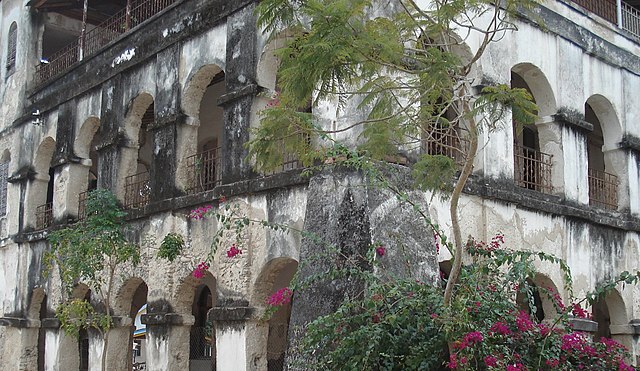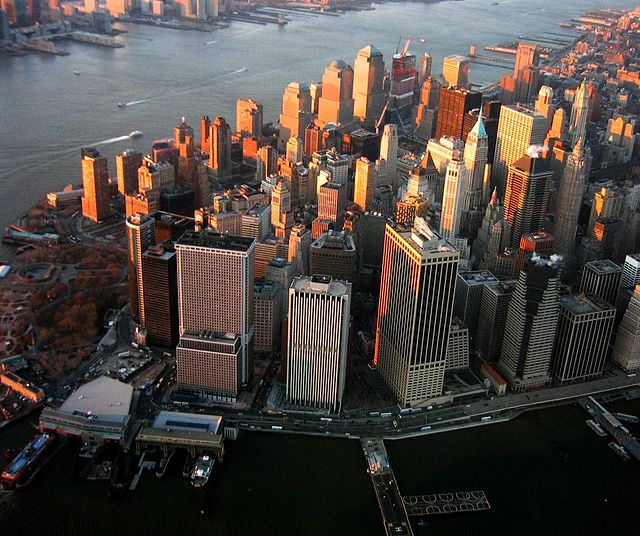| Number[A] |
Country/Territory |
Site[B] |
Location[C] |
Period[C] |
|---|
| 1 |
Albania |
Voskopoje churches |
Korce |
1780 |
| 2 |
Bahamas |
Whylly Plantation at Clifton Point |
Clifton Point, New Providence |
1750 |
| 3 |
Belarus |
Pervomaisk Church |
Pervomaisk, Uzdensky, Minksaya |
1626 |
| 4 |
Bosnia and Herzegovina |
Mostar Historic Center |
Mostar |
1557 |
| 5 |
Brazil |
Vila de Paranapiacaba |
Santo Andre |
1868 |
| 6 |
Cambodia |
Banteay/Chhmar Temple of Jayavarman VII |
Thmar Puok, Oddar Meanchey Province |
1199 |
| 7 |
Chile |
Ruedas de Agua |
Pichidegua, Larmahue |
1799 |
| 8 |
China |
Shaxi Market Area |
Shaxi Zhen, Shaxi Valley, Jianchuan |
1800 |
| 9 |
China |
Ohel Rachel Synagogue |
Shanghai |
1920 |
| 10 |
China |
Da Qin Christian Pagoda and Monastery |
Zhouzhi, Lou Guan Tai, Shaanxi |
781 |
| 11 |
China |
Great Wall of China Cultural Landscape (Beijing) |
Beijing |
14th-16th centuries |
| 12 |
Croatia |
Vukovar city center |
Vukovar |
1799 |
| 13 |
Croatia |
Lazareti |
Dubrovnik |
1648 |
| 14 |
Cuba |
National Art Schools |
Cubanacan, Havana |
1965 |
| 15 |
Czech Republic |
Terezin Fortress |
Terezin |
1790 |
| 16 |
Egypt |
Khasekhemwy at Hierakonpolis |
Edfu, El Muissat, Kom el Ahmar |
2700 BC |
| 17 |
Egypt |
Valley of the Kings |
Thebes, West Bank at Luxor |
1080 BC |
| 18 |
Egypt |
White and Red Monasteries |
Sohag, Middle Egypt |
500 |
| 19 |
Egypt |
Sultan Al Muayyad Hospital |
Cairo |
1420 |
| 20 |
France |
Chateau de Chantilly |
Chantilly, Oise |
1885 |
| 21 |
France |
St. Pierre de Beauvais Cathedral |
Beauvais, Oise |
1700–1799 |
| 22 |
Georgia |
Tbilisi Historic District |
Tbilisi |
500 BC–0 AD |
| 23 |
Georgia |
Bodbe Cathedral |
Qedeli Village, Signakhi Region |
850 |
| 24 |
Georgia |
Art Nouveau Buildings |
Tbilisi, Batumi, Kutaisi, Poti, Dusheti |
1900 |
| 25 |
Germany |
Carl-Theodor Bridge |
Heidelberg |
1788 |
| 26 |
Ghana |
Larabanga Mosque |
Larabanga, Western Gonja |
1650 |
| 27 |
Greece |
Palaikastro Archaeological site |
Palaikastro, Crete |
100 |
| 28 |
Guatemala |
Piedras Negras |
Piedras Negras |
400 AD–800 AD |
| 29 |
India |
Basgo Gompa (Maitreya Temples) |
Ladakh, Leh, Basgo |
1699 |
| 30 |
India |
Osmania Women College |
Hyderabad, Telangana |
1857 |
| 31 |
India |
Dwarka Dheesh Mandir Temple |
Ahmedabad |
before 1600 |
| 32 |
India |
Anagundi Historic Settlement |
Gangawati, Koppal, Karnataka |
1400–1600 |
| 33 |
India |
Nako Temples |
Himachal, Kinnaur, Nako |
1025 |
| 34 |
India |
Lutyens Bungalow Zone |
New Delhi |
1931 |
| 35 |
Indonesia |
Omo Hada |
Nias, Teluk Dalam, Hilinawalo Mazingo |
1715 |
| 36 |
Iraq |
Nineveh and Nimrud Palaces |
near Mosul |
883 BC – 681 BC |
| 37 |
Iraq |
Citadel of Arbil |
Erbil, Kurdistan Region |
6th millennium BC-Present |
| 38 |
Israel |
Bet She'arim Archaeological Site |
Kiryat Tiv'on |
100 – 300 AD |
| 39 |
Italy |
Chains Bridge |
Bagni of Lucca |
1860 |
| 40 |
Italy |
Cinque Terre |
Monterosso, Riomaggiore, Vernazza |
13th century AD |
| 41 |
Italy |
Port of Trajan Archaeological Park |
Fiumicino (Rome-Lazio Region) |
100 |
| 42 |
Jamaica |
Falmouth historic town |
Falmouth, Parish of Trelawny |
1784 |
| 43 |
Japan |
Tomo Port Town |
Fukuyama |
1800 |
| 44 |
Jordan |
Petra Archaeological Site |
Wadi Mousa, Petra |
100–299 AD |
| 45 |
Kenya |
Thimlich Ohinga Cultural Landscape |
Migori |
1399 |
| 46 |
Lebanon |
Enfeh |
near Tripoli |
1299 |
| 47 |
Malaysia |
Kampung Cina River Frontage |
Kuala Terengganu |
1939 |
| 48 |
Malaysia |
George Town Historic Enclave |
George Town, Penang State |
1940 |
| 49 |
Mali |
Medine Fort |
Medine |
1855 |
| 50 |
Malta |
Mnajdra Prehistoric Temples |
Mnajdra |
3600 BC–2500 BC |
| 51 |
Mexico |
San Juan de Ulua Fort |
Veracruz |
1825 |
| 52 |
Mexico |
Yaxchilan Archaeological Zone |
Cuenca del Usumacinta, Chiapas |
900 |
| 53 |
Mexico |
Inmaculada Concepcion Chapel |
Nurio, Michoacan |
1700 |
| 54 |
Moldova |
Barbary-Bosia Monastery Complex |
Butuceni, Judet Orhei, Moldovan Auto. Reg. |
1675 |
| 55 |
Myanmar |
Sri-Ksetra Temples |
Hmawa |
400 |
| 56 |
Nepal |
Teku Thapatali Monument Zone |
Bagmati River, Kathmandu |
19th Century |
| 57 |
Nepal |
Itum Monastery |
Kathmandu |
1200 |
| 58 |
Nigeria |
Benin City Earthworks |
Benin City, Edo State |
1460 |
| 59 |
Pakistan |
Uch Monument Complex |
Uch, Bahawalpur District, Punjab Province |
1449 |
| 60 |
Panama |
San Lorenzo Castle & San Geronimo Fort |
Chagres, Colon and Portobelo |
1779 |
| 61 |
Peru |
Historic Center of Cusco |
Cusco |
1699 |
| 62 |
Peru |
Santuario de Nuestra Señora de Cocharcas |
Cocharcas, Chincheros, Apurimac Dept. |
|
| 63 |
Peru |
Caral sacred city |
Supe Pueblo, Barranca Province, Caral |
3000 BC–2000 BC |
| 64 |
Peru |
Los Pinchudos |
Rio Abiseo National Park |
1200 |
| 65 |
Peru |
Oyon Valley Missionary Chapels |
Oyon, Departamento de Lima |
1699 |
| 66 |
Peru |
San Pedro de Morrope Chapel |
Morrope |
1599 |
| 67 |
Poland |
Wislica Archaeological Site |
Wislica |
1175 |
| 68 |
Russia |
Alvar Aalto Library |
Vyborg, Leningrad Region |
1935 |
| 69 |
Russia |
Arkhangelskoye State Museum |
Moscow |
1831 |
| 70 |
Russia |
"Oranienbaum" State Museum Reserve |
Lomonosov |
1774 |
| 71 |
Russia |
Narcomfin Building |
Moscow |
1930 |
| 72 |
Russia |
Resurrection New Jerusalem Monastery |
Istra |
1698 |
| 73 |
Russia |
Assumption Church |
Kondopoga, Karelia |
1774 |
| 74 |
Russia |
Karelian Petroglyph Sites |
Belomorsky and Pudozhsky Districts |
3500 BC |
| 75 |
Russia |
Church of our Savior & Rostov Veliky Historic Center |
Rostov Veliky |
862–1690 |
| 76 |
Syria |
The Citadel of Aleppo |
Aleppo |
2000 BC |
| 77 |
Syria |
Damascus Old City & Saddle Souk |
Damascus |
1400–1800 |
| 78 |
Tanzania |
Bagamoyo Historic Town |
Bagamoyo |
1800 |
| 79 |
Turkey |
Ani Archaeological Site |
Ocarli Koyu, Kars |
1399 |
| 80 |
Turkey |
Temple of Augustus |
Ankara |
25 BC–20 BC |
| 81 |
Turkey |
Little Hagia Sophia Mosque (Kucuk Ayasofya Camii) |
Istanbul |
527–536 |
| 82 |
Turkey |
Tepebasi District |
Gaziantep |
1914 |
| 83 |
Turkmenistan |
Merv Archaeological Site |
Bairam Ali |
1400 |
| 84 |
Ukraine |
Church of The Savior Of Berestove |
Kyiv |
1600–1800 |
| 85 |
Ukraine |
Ancient Chersonesos |
Sevastopol |
500–15th century |
| 86 |
United Kingdom |
Stowe House |
Stowe, Buckingham, Buckinghamshire |
1890 |
| 87 |
United Kingdom |
St. George's Church |
London |
1730 |
| 88 |
United Kingdom |
Brading Roman Villa |
Brading, Isle of Wight |
300 AD |
| 89 |
United Kingdom |
Sinclair and Girnigoe Castles |
Nr. Wick, Caithness, Scotland |
1606 |
| 90 |
United Kingdom |
Sugar warehouses |
Greenock, Renfrewshire |
1886 |
| 91 |
United Kingdom |
Selby Abbey |
Selby, North Yorkshire |
1069 |
| 92 |
United States of America |
San Juan Capistrano Mission Church |
San Juan Capistrano |
1806 |
| 93 |
United States of America |
A. Conger Goodyear House |
Old Westbury, Long Island, New York |
1939 |
| 94 |
United States of America |
St. Ann and the Holy Trinity Church |
Brooklyn Heights, New York |
1848 |
| 95 |
United States of America |
San Esteban del Rey Mission at Acoma Pueblo |
Acoma Pueblo, New Mexico |
1643 |
| 96 |
United States of America |
Schindler Kings Road House and Studio |
West Hollywood, California |
1922 |
| 97 |
Yemen |
Tarim |
Tarim, Wadi Hadramaut |
1870–1920 |
| 98 |
Yugoslavia |
Subotica Synagogue |
Subotica |
1902 |
| 99 |
Yugoslavia |
Prizren Historic Center |
Kosovo, Prizren |
|
| 100 |
Yugoslavia |
Peć and Decani Monasteries |
Kosovo & Metohiha, Decani and Pec |
1850 |
| 101[D] |
United States of America |
Historic Lower Manhattan |
New York, New York |
Since 1625 |










